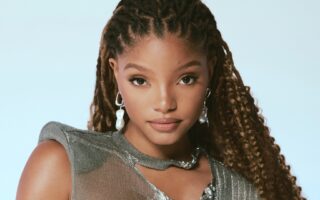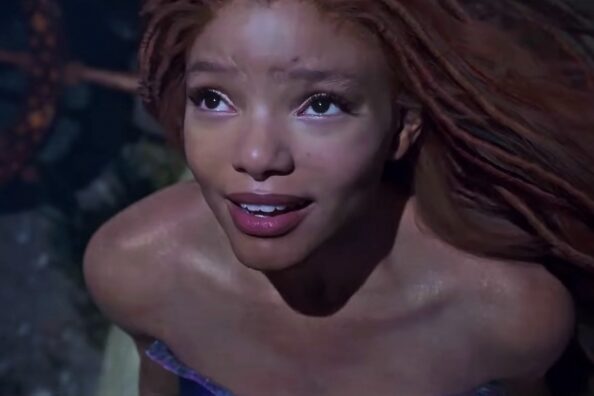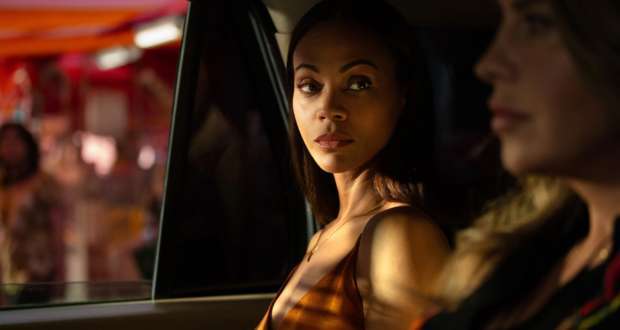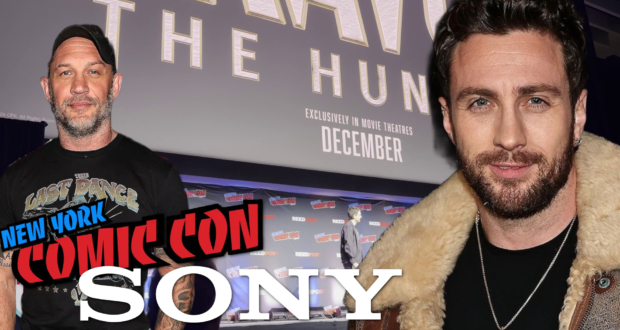Despite the announcement of Halle Bailey in the titular role of the live-action The Little Mermaid three years ago, the first glimpse of her in the teaser trailer released on September 9th, 2022 has sparked outrage. The video lasting less than 90 seconds – which is by definition less than a moment – is seemingly too long for some to handle seeing a brown-skinned girl in the spotlight.
The video in question opens with the powerful image of crashing waves as the camera swoops beneath the surface of the tumultuous sea, leaving the violence of the outside world and delving into the serene underwater landscape. These juxtaposing images provide the audience with an instant sense of relief as the gentle harp plucks the familiar motif of Ariel’s “I want” song – a track within musicals that outlines a character’s inner desires (think Simba’s I just can’t wait to be King or Mulan’s Reflection). While following a fish tale, the audience is taken on a breathless journey, diving through shipwrecks and aquatic caves as the score swells to an abrupt pause. The stillness of a close-up reveals the longing gaze of Ariel looking towards the surface of the water as her mellifluous voice sings: “out of the sea wish I could be part of that world”.
It is objectively the perfect teaser trailer, giving the audience their dose of nostalgia while simultaneously providing a twist to this well-known story. How can you watch this video and not have goosebumps I’ll never understand, yet nothing quite drowns the magic of cinema as the voices of incensed bigots … I mean, viewers.
But let’s not be hasty in our judgment, they may well have a point. So what should a half-human-half-aquatic being look like? Essentially it could be anything from a jellyfish to a shark on the gill-bearing side and surely the same vastness could be said of the mermaid’s heritage to Homo sapiens, right? Wrong. According to the outraged, white is right and there is no wiggle room in their collective imagination that could envisage a human-fish hybrid with brown skin.
Many have tried to frame their overtly racist views in the guise of being so-called Disney purists, by expressing disappointment at an Ariel looking different from the white colored-in skin and crayon-red hair of the “original” cartoon.
It is worth noting that the 1989 Disney animation The Little Mermaid was itself a re-envisioning of Hans Christian Andersen’s fairy tale of the same name written in 1837. So why was there no public upset in the 80s when the setting was changed from the coast of Denmark to the Caribbean Sea? Where was this energy when Disney changed large plot points such as the little mermaid (spoiler alert) stabbing herself with an enchanted dagger and throwing herself back into the sea? Or the fact that Disney invents the name Ariel altogether? Simple answer: because Disney states that this is a re-imagining of Andersen’s tale. What this tells us is that poetic license is allowed as long as it stays within social expectations, and quite frankly in 2022 it is clearly unacceptable for a woman of color to be the lead of a Disney live-action, even if it is set in the Caribbean.
This is not the first time that we have seen racist assertions veiled as concerns of meddling with the author’s vision in regard to the casting of fantasy characters, and I’d be surprised if Halle Bailey were the last. Sir Lenny Henry’s depiction of Sadoc Burrows in The Rings of Power, based on the world created by Lord of The Rings author J.R.R.Tolkien, has come under scrutiny for being “unrealistic” even though a) hobbits don’t actually exist and b) the Harfoot breed of the hobbit race have always been written as “of browner skin than other hobbits” (The Lord of the Rings, Prologue, I. “Concerning Hobbits”).
When Netflix released The Sandman, Neil Gaiman (series executive producer and author of the graphic novel it was based upon) brandished his social media battle-axe to vanquish the internet trolls once and for all: “I give zero f***s about people who don’t understand/haven’t read Sandman whining about a non-binary Desire or that Death isn’t white enough” (Twitter, May 29th, 2021).
Back to The Little Mermaid, while some have stated that the casting of Halle Bailey is Disney giving in to the “woke” generation, what would be said if a Trans actor were suggested for the role of Ariel? And more importantly what would the “snowflake police” say if they were to learn that this casting choice would be more in keeping with the original text?
Written at a time when Hans Christian Andersen was struggling with his sexuality, “The Little Mermaid” became his allegory of same-sex desire. In his diaries, Andersen demonstrates his conflict between sexuality and piousness, writing: “Like Moses, I stand on the mountain gazing into the promised land which I shall never reach” (Wullschlager in Watson, 2019, p.408).
 And when reading the tale through a psycho-analytical approach, Freud’s “castration anxiety” theory is apparent when a missing part of one’s anatomy is linked to forbidden, sexual desires and fears. Andersen’s internalized agony is metaphorically expressed through the protagonist’s literal castrations.
And when reading the tale through a psycho-analytical approach, Freud’s “castration anxiety” theory is apparent when a missing part of one’s anatomy is linked to forbidden, sexual desires and fears. Andersen’s internalized agony is metaphorically expressed through the protagonist’s literal castrations.
Firstly, the character’s internal conflict seems representative of gender dysphoria, when in an act of self-mutilation, she wishes her tail to “divide and shrink into what men call a lovely pair of legs” (Andersen, 2009, p.94). The mermaid’s second castration, “put out your little tongue so that I can cut it off in payment” (Andersen, 2009, p.95), mirrors Andersen’s self-censorship in a letter to Edvard – the man he held unreciprocated romantic feelings for – stating: “This is one of the sufferings one cannot speak of even with one’s closest friend” (Wullschlager in Watson, 2019, p.408).
It is obvious, then, that this idea of sticking to the original, which is supposedly very important to the complainers, is not truly their cause for concern, considering that they don’t know the original text at all.
The very purpose of fantasy is to allow the marginalized a space, removed from reality, to explore complex themes. Famous examples of this are metaphors of colonization, slavery, and segregation in the dystopian Planet of the Apes, or Star Wars embodying the violence of Empire and expansion through the character Darth Vader. Art is supposed to comment on political, social, and cultural issues in a form that is moving, and thought-provoking, therefore it would be pointless, and quite frankly artless, for filmmakers to retell a story by recreating a shot-for-shot copy of the last interpretation.
So, where will they take The Little Mermaid in 2023? Is Ariel the ghost of a Black woman who threw herself into the sea to escape the bonds of slavery? Could Prince Eric be the son of a colonizer? If that’s the case, imagine the tension this will cause when he falls in love with a Black woman! What message will be made when Ariel’s silence is rooted in the approval of a White man? I guess we’ll have to wait until its release in May…
In its most basic terms, the narrative of “The Little Mermaid” is a story of liminality, where the protagonist exists within one world whilst wishing to be in another. How this theme is interpreted depends on the era in which it is told. In 1837 the character’s choice between sexual desire and religious acceptance is established through the contrast between life in the sea or on land. This is even more prevalent when considering the author’s sexuality. In contrast, Disney’s 1989 adaptation chooses to focus on societal pressures silencing women and the fight to regain their voice.
With all of this in mind, I offer you a challenge: re-watch the video that ignited this controversy and witness the added poignancy when Ashman’s lyrics “wish I could be part of that world” come from the mouth of an African American actress. And in an art-imitating-life moment, as Ariel looks towards the surface of the water, begging for acceptance, you may notice Halle Bailey asking when will Black people truly be allowed to have their voices heard? Then you will surely agree that the amount of outrage shown at Halle Bailey’s casting proves that Disney is absolutely right – in 2022 we need to see a brown-skinned girl in this role.


















